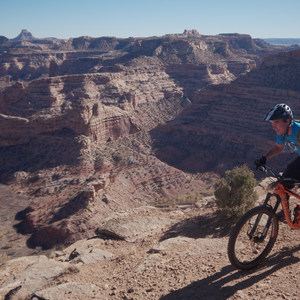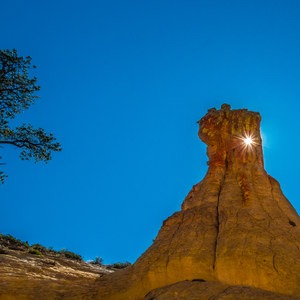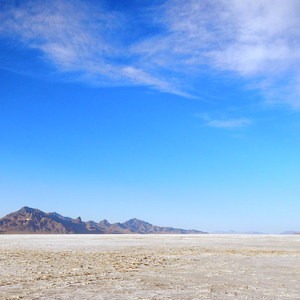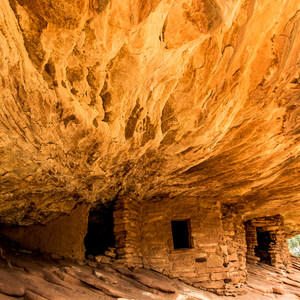You are here
Established in 1946, the Bureau of Land Management is the largest land management agency in the United States. Over 245 million acres fall under the jurisdiction of the BLM. The BLM’s largest holdings are actually unseen in the form of 700 million acres of sub-surface mineral estate. The BLM works hand in hand with the other national land management agencies, at times even co-managing portions of protected land.
The origins of the BLM date back to the Land Ordinance act of 1785 and the Northwest Ordinance of 1787. Following the American Revolution, an accurate survey of the 13 original colonies was established by these two laws. As the United States slowly expanded and the government acquired more lands to the west, management of public lands became critical. The General Land Office was created in 1812 to oversee and manage all public lands. A full century passed before the Grazing Service was implemented in the 1930s to manage the expansive ranching operations that filled the West. Overgrazing was rampant, and the Secretary of the Interior determined to reduce the damages to public grazing lands. Following a shake-up in the Truman administration, the Secretary of the Interior moved to combine the Grazing Service with the General Land Office to form the Bureau of Land Management as we currently know it today. The BLM held the combined mission of managing the public domain (formerly the Grazing Service’s mandate) and disposing of the public domain (the General Land Office’s work).
Today the BLM has a mixed mandate, managing production in mining, ranching and logging while also protecting the environmental resources in wildlife refuges, forests, parks, and even military land. The tension between these two competing interests has resulted in numerous controversies over the years.
Under the Federal Land Policy and Management Act (FLPMA), the policy of land disposal was finally ended as the BLM attempted to match the Forest Service in its management practices. Taking an active inventory of the lands held, implementing land management planning, and managing multiple-use lands became a higher priority. Beyond just forests, grazing fees were also changed under the FLPMA, allowing 50 percent of all fees collected to go toward rangeland improvement measures.
The Stock Raising Homestead Act of 1916 signed by President Woodrow Wilson allowed private ownership of lands but held the underground mineral rights for the federal government. As a result, the BLM holds over 700 million acres of subsurface mineral estate that lies under federal, state, and public lands alike. The BLM leases solid minerals found in this estate, like sodium, phosphate and potassium. The BLM also leases base and precious metals under this same legal framework.
Holding roughly an eighth of the land mass of the United States under its control, 27 million acres fall under the BLM’s National Landscape Conservation System. These lands are special in that they are set aside for conservation and restoration of “nationally significant landscapes that are recognized for their outstanding cultural, ecological, and scientific values.” The NCLS is newer, established in 2000. The 887 federally recognized areas include places like national monuments, national conservation areas, wilderness areas, national scenic trails, and and outstanding national areas. Lands like these help the BLM manage and protect habitat for 245 threatened or endangered wildlife and plant species.
The BLM also holds the reins on the management and protection of wild horses and burros. Herd Management Areas with roughly 67,000 animals are controlled under the 1971 Wild Free-Roaming Horses and Burros Act. Authorizing the BLM to manage for public land health, the agency is allowed to remove excess wild horses and burros when rangelands face overuse. The number of animals currently in the HMAs exceeds the Appropriate Management Level, which describes the “number of wild horses and burros that can thrive in balance with other public land resources and uses.” The challenge of wild horse and burro management has been extreme, with public sentiment often at odds with management practices.
Given the massive land under its control, and the wide and varied resources it contains, the Bureau of Land Management has a challenging mandate.
Access Fees
Many BLM lands are free to access, though modest use fees apply in some areas. An America the Beautiful Pass can be purchased from most federal recreation sites for $80 and is good for national parks, national wildife refuges, national forests and grasslands, and Bureau of Reclamation and U.S. Army Corps of Engineers lands. Discounted passes are available for fourth graders, senior citizens, active duty military, and people with disabilities.
Visit Wisely
We all want to visit and enjoy these beautiful spaces that offer reprieve from the day-to-day grind. We have a duty to do so responsibly. By following the Leave No Trace ethic and making memories not tracks, we can ensure that these gorgeous environments will be available for future generations.
Consult these articles for additional information on U.S. public lands:













Comments
Sign In and share them.